24.1 – Recap
I’d like you to take a moment and reflect upon the last 23 chapters in this module. I want you to recap the things we have discussed so far mentally.
In a nutshell, here is what we have discussed –
-
- Identified that investment is a key part of personal finance
- Identified various assets which can help us move closer to our retirement goals or any other financial goals
- Figured that Mutual funds are the primary financial instrument which will help us plan our financial goals better
- After establishing the above, we figured that it is important to focus and learn more about mutual funds
- We started by understanding what a mutual fund is followed by the importance of the mutual fact sheet
- We identified the most popular categories of mutual funds and discussed the same
- In the process, we explored various types of funds across both equity and debt categories
- Discussed the Index fund
- Most recently, we discussed the various performance and risk attributes of mutual funds.
We are now at an interesting junction as we steer our way to the final leg of this module, i.e. to figure ways to build mutual fund portfolios to help us achieve various financial goals in our lives.
If you think about it, building a mutual fund portfolio has three parts to it –
-
- Identify a financial goal (it can be any) and translate that financial goal in terms of time and corpus. For example here is a financial goal – 40 lakh (in today’s terms) for my 10-year-old kid’s Post-graduation degree in the US. If you break this down, it translates to a requirement of Rs.40L (adjusted to inflation) in 15 years
- Identification of funds to help you achieve the financial goal
- Periodic review and maintenance of the portfolio.
In my view, the first and third point is fairly easy. It’s the 2nd point, i.e. the actual act of building a portfolio is the tricky bit. If you isolate just the 2nd point, then you will realize that it is made up of three things –
-
- Analyze funds, pick the right ones and avoid investing in the bad ones
- Figure the portfolio composition – just equity, just debt, a mix of equity and debt etc.
- Once the portfolio is identified, figure how much to invest across each of these funds
Again, in my view, one of the key element is the fund analysis. You need to get this right and ensure that you have partnered with the right fund house and the right fund to help you achieve the financial goal you’ve set aside.
In this chapter, we will discuss a simple technique using which you can analyze an equity mutual fund. Think of this as a template; you can apply the same to all equity funds. Of course, there is no right or wrong technique; what I discuss below is from my own experience. You can develop your template as you gain more experience with mutual fund investing.
So let us get started.
24.2 – Hygiene check
I’ll pick an Equity mutual fund and set out the process to analyze the fund. As I mentioned, there is no guided path to analyze a mutual fund. You need to develop your method to do that. While few investors like to focus heavily on the fund manager and the quality of stocks the fund manager has picked, others like to look at only the historical returns.
I like to keep the process simple and stick to things that I’m most concerned about, i.e. the fund’s ability to manage risk and generate returns.
Alright, so let us get started on fund analysis.
For the sake of this discussion, I’ve picked the Kotak Standard Multi-Cap Fund (Growth, Regular). Do not treat this as a recommendation of any sort 😊
Remember, direct funds are relatively new and may not have the necessary historical information; hence we are looking at the regular funds.
The first step is to run a few basic hygiene checks, which includes some of the good to know information about the fund. Usually, this information is available in the fund’s fact sheet. The first thing to note is ‘about the fund itself’, take a look at the snapshot below –
From the note above, I develop an orientation for this fund –
-
- It’s a multi-cap fund, which means the fund can invest across various categorization.
- Since it’s a multi-cap fund, I’d expect the fund benchmark’s itself against a diversified index, which means Nifty 50 TRI may not be its benchmark
- I look at the fund’s inception date, in this case, its 11th Sept 2009, so not a very old fund, but old enough to give me ten years of history.
- The fund manager has remained the same, which is fine. If you belong to the fund manager cult, then you can dig deeper into who the fund manager is, his background, credentials, track record etc. I prefer to skip that bit.
I dig further in the fact sheet and get other important information about the fund –
You can read through the investment objective, you will get valuable insights from this at times, especially when looking at debt funds. You will figure that this fund is not restricted to any particular market capitalization. The investment style grid suggests that the fund can invest across the market and has a blended approach to growth and value style investing.
If you dig up the portfolio details, you will figure that the fund has the majority of its investment in large and mid-cap stocks. Given this, the benchmark for this fund is Nifty 200 Total Return Index, which is fine.
I know many MF investors dig into the portfolio details and start to sweat over why the fund manager has invested ‘x’ amount in Stock A versus ‘y’ amount in stock B, and in the process, think they carry out ‘a through’ mutual fund research.
Nitpicking on the Equity fund’s portfolio is not research. I mean, think about it, if you could figure out which is a good stock and which is not, then you may as well invest in the stock directly right?
This is as good as sitting on your couch with a tub of popcorn and passing serious, opinionated comments on how Virat Kohli should bat in International cricket.
Anyway, the fund has an AUM of Rs.29,500 Cr, which makes it a large fund. From the AMC perspective, how large is this fund? To figure out that, you need to look at the AMC’s overall AUM.
The AUM information is updated on the AMC website regularly. As you can see, Kotak AMC has an AUM of 1.5L Crore, which makes the standard equity fund about 18% of the overall AUM.
However, suppose you look at the Equity category. In that case, the AUM is about 40,000 Crore, which means the Kotak Standard Equity Fund is nearly 72% of the category AUM, which implies that this is one of their flagship funds for the category.
Why are we digging into this information? Well, we need to know how the fund is positioned within the AMC to get a perspective. It is also expected that the AMC would be extra cautious not to mess up their flagship funds.
While at it, do you think funds with large AUM is a problem?. I know many folks fret about ‘large AUM’ problem, the rationale being that the fund manager may find it difficult to manage the funds as the opportunity shrinks.
If the fund flow is steady and the AUM increases gradually over time, then, in my opinion, it should be ok. However, if there is a drastic increase in AUM, maybe because of aggressive marketing campaigns, then that could be a problem and usually results in a slight lag in the performance.
Smaller funds do have an advantage in terms of nimbleness.
Apart from the AUM size, we look at the expense ratio of the fund, direct is at 0.73% and regular is at 1.69%. Not surprising at all 😊
Since you are reading this, I hope you won’t consider regular funds ever again in your life 😊
Moving ahead, I’d like you to look at a few other metrics, these are reported in the factsheet and also on 3rd party websites like Morningstar and Value Research.
The snapshot below is from Morningstar.
The fund’s standard deviation (on a 3-year basis) is 20.58%; this suggests the fund can fluctuate 20.58% up or down over a 3-year basis. The standard deviation of the category is 21.38%. If you look at it from a risk perspective, this is nice since it indicates that the fund is slightly better compared to the category.
If you switch to the 5 and 10 years period, the fund’s SD is 18.39% and 17.42%, while the category’s SD is 19.12% and 18.4% respectively. For now, this is a good sign as it hints that the fund is good at managing the risk.
Do look at the Sharpe ratio as well. In this case, the Sharpe ratio is negative, which means either the risk-free return is higher compared to the portfolio’s return or the portfolio’s expected returns are negative. Either way, this is not conclusive. Hence we can ignore the Sharpe ratio.
Check the Alpha and the beta of the fund to get a sense of fund’s performance compared to the category. Of course, you need to do this across 3, 5, and 10 year period.
Usually, the fund’s hygiene check ends at this point. All that we do in this stage is to gather a few important ‘good to know’ data points.
24.3 – Rolling returns check
You must have heard the line ‘past performance is not an indicator of the future performance’, while this is true, there is no better alternative to this. By studying the past returns and its behaviour, we would at least know what to expect.
By past returns, I don’t mean 1,3,6 or 12 months returns. In fact, in my opinion, anything less than three years return is pointless when it comes to Equity returns. Three years itself is an ok time frame, I’d suggest five years or higher, but three years is a good start.
We start by looking at the rolling returns. By the way, I hope you know what rolling returns mean, else I’d suggest you look at the chapter and familiarize yourself with the same.
I’ll post a series of rolling return snapshots sourced from Rupeevest website. Hopefully, soon we will have Rolling returns of funds on Coin, our mutual fund platform.
Here is the three-year rolling return of the Kotak Standard Multi cap fund –
As you can see, I’ve got the 3-year rolling return from Sept 2012. The blue line is the fund’s three-year rolling return, and the grey is the benchmark’s rolling return.
The first thing that will catch your attention is the spread between the two rolling returns. The blue line is consistently above the grey line, indicating that the fund has delivered better returns compared to its benchmark.
In the three years, the fund has delivered an average return of 15.2% while the benchmark has delivered 9.87%.
The moment you see such an outperformance, rather than getting excited, you need to pause and ask yourself – how is this fund pulling this off. Is the fund taking in more risk compared to its benchmark?
We will figure that out soon.
While the spread between the fund and its benchmark was significant in the initial years, it has shrunk since mid-2018.
Is the fund losing its sheen? One probable reason for this could be the rapid rise in its AUM.
Apart from average returns, look at the minimum and maximum returns to get a perspective on the dispersion of returns.
The fund’s 3-year min and max is -5.19% and +31.2%, and the benchmark’s min and max are – 6.97% and +23.53% respectively. This fund stands impressive at this point.
It is important to understand that you are looking at the 3-year data, but just the 3-years data is not sufficient for analyzing an Equity mutual fund, we need to look at five and 10-year data as well to get a perspective.
Here is the 5-year rolling return of the fund and we compare that to its benchmark, the Nifty 200 –
Again, on a 5-year basis, the fund’s outperformance to the benchmark is quite impressive. While the fund’s average is +16.51%, the benchmark is +10.46%. Note, this is still very similar to the 3-year data.
The dispersion in returns when looked at the minimum and maximum returns are also quite interesting. The fund’s minimum is still a positive 1.18% while the benchmark is -2.28%.
However, the spread has narrowed down towards the extreme right, similar to how it does for the 3-year rolling return.
Lastly, let us see how the fund performs on a 10-year rolling return basis. Note, there may not be many data points for the 10 years –
The average 10-year rolling return is 12.07% versus the benchmark’s 7.48%, quite remarkable in my opinion. While the fund’s minimum is 8.59%, the benchmark’s minimum is 3.79%. On the positive returns side, the fund has put up an impressive 14.56% versus the benchmark’s 9.67%.
Based on the rolling return data, there are a few apparent things –
- Why is the spread shrinking? Is the fund losing its sheen?
- While the returns are impressive, is this coming at the cost of higher risk?
The answer to the first question is tricky. There is no fund manager change, so its unlikely the investment style has changed. Is this because the fund has a large AUM? Well, this is a tough call to make, but my gut says this could as well be the reason.
Have a look at the trailing returns as on date –
We can see the fund has underperformed the benchmark on a 3-year basis, while it is at par on a 5-year basis, and on the 10-year basis, it still has a slight outperformance.
All in all, it gives me a perspective that the returns were great in the past years, but will that continue is the question. However, the interesting bit is that the performance has been better than its peers look at the Equity Multi cap category performance.
As far as the 2nd concern goes, let us focus on the risk metrics of the fund, perhaps the most crucial bit of our analysis.
24.4 – Risk – Return matrix check
I find the risk-reward matrix published by Morningstar quite useful. Have a look at this –
I can choose to view this across 3, 5, and 10 years period. I’ve selected for five years.
The initial bit highlights the fund’s risk versus the category and the fund’s return versus the category. We know the returns have been great, so no point looking at it again. Risk versus the category risk is ‘below average’, so that’s encouraging. For more details, I now look at the matrix.
The Y-axis of this matrix is returned, and the X-axis is the risk. If you have read Varsity’s Module 9 on ‘Risk Management’, then this matrix is already familiar to you. If not, all you need to know is that the higher you move on the Y-axis, higher is the return, and the further you traverse on the X-axis, higher is the risk.
Anyway, ignore the blue and yellow button and start with the red square, which is right at the centre of the matrix. The red square belongs to the benchmark, and from its positioning in the matrix, we can conclude the benchmark has generated a return of 10% by taking the risk of 19%.
Now, look at the yellow button; it belongs to the category. We can see that the yellow button is on the same vertical plane as the red square. Hence we can conclude that the average category risk is similar to that of the benchmark’s risk, i.e. 19%.
Unfortunately, for 19% risk, the category’s return does not match upto its benchmark, as it is slightly below the benchmark’s return.
So if you were to choose an investment between the category and its benchmark, it does not make sense to invest in the category since for similar risk, the benchmark offers better returns.
What about the fund in perspective?
Well, the fund has a better risk-reward ratio compared to the benchmark. It seems to have generated similar returns like the benchmark by taking on lesser risk, which in my opinion is good.
Remember, you are paying the fund manager for active management. Active management does not necessarily mean generating better than benchmark return. I think its job well done if the fund manager can generate similar returns like the benchmark by taking on lesser risk (at a lower cost hopefully).
So on a 5-year mark, this is looking good. Shifting gear to the 10-year window –
It gets a bit more impressive on a ten-year basis, while the category and benchmark have a similar risk-return profile (18% risk, 12% return), the fund has slightly lesser risk and higher return profile.
So at this point, I know that the fund has exhibited a decent track record in terms of risk and reward profile. As the last step, let us look at the capture ratios.
24.5 – Capture ratios
We discussed the capture ratios in the previous chapter. I hope you are familiar with it by now. Here is the capture ratio on a 5-year basis –
Look at the downside capture ratio; the fund has managed to capture 90% of the benchmark’s downside, which is good. Again, this is a reflection of better risk management at the fund house.
The capture ratio gets better on a 10-year basis –
The fund has captured almost 100% of the benchmark’s return while capturing only 87% of the benchmark’s downside returns. Contrast this to the category.
All in all, our quick analysis shows that Kotak Standard Multi-cap fund is good. Does that mean you should invest in it right away? Well, we will discuss this next chapter.
Lastly, I want you to recognize the fact that we have not looked at fund ‘ranking’ given out by agencies. Looking at fund ranking to make an investment decision is quite useless since you can do a better job yourself.
Key takeaways from this chapter
-
- You can start the equity mutual fund research with a basic hygiene check to familiarize yourself with the fund
- Know the size of the AUM, its investment objectives, a bit about the fund manager, and its benchmark
- Look for the rolling returns of the fund on 3,5 and 10-year basis.
- Look for the average, minimum, and the maximum returns to get a sense of the dispersion of the return
- Compare the rolling returns with its benchmark rolling returns
- If there is excess return, check if this is coming at the cost of additional risk
- Look for the risk-reward matrix and understand the risk-reward profile on 5 and 10 years basis
- Check the capture ratios



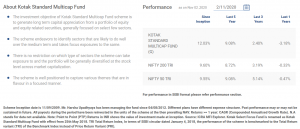
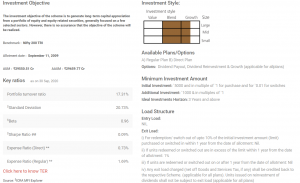
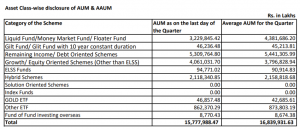

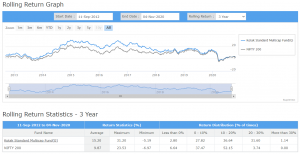
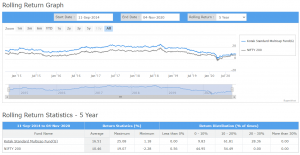
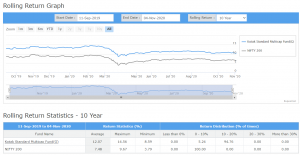
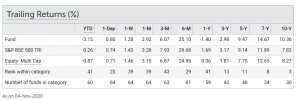
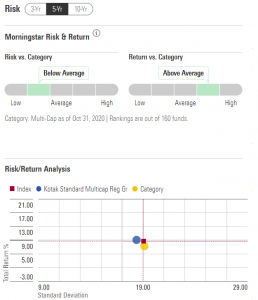
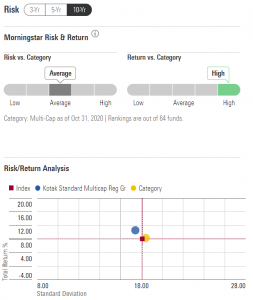


Finally it’s here!! Was waiting desperately.. Thank you so much Karthik sir
Hope you liked it Ketan!
Where can i find the fact sheets of all mutual funds? And can you guys integrate them with coin?
You will need to visit the fund’s page on coin or the AMC’s website directly, Anurag.
Great content!!! I have been waiting for this. Thank you so much 😊
Hope it was worth your wait, Mukta 🙂
Sir I know mf module is a big hit, but I’m eager to know what the next module is going to be on sir. I have taken a few very good positions on equity based on your research methodology. So I’m not very excited about this module sir. I hope you don’t take it the wrong way. Could you let me know what the next module is going to be on? Thank you.
The next module is about building an integrated financial model, its very useful in business valuations. I’m very excited about it. But I can start work on it only after I complete this module gets completed 🙂
Finally a new chapter and I believe one of the most important ones of the module at that. I hope the next one comes out even sooner 😉
I have a question though not specific to this chapter, If you are investing lumpsum in a MF, is it more logical to add additional funds to the ongoing holding of the same fund(say adding 50K more after a year to that holding) or is it logical to start a completely new holding of the same fund(say invest afresh in the same MF from scratch with the 50K and keep the earlier ongoing investment as it is)?
Ajay, it depends on your financial goals. Say you started ‘Portfolio A’ in Jan 2020 with a specific financial goal in mind, and start investing systematically in this portfolio every month. In Jan 2021, you have a lump sum to invest, but there is no new financial goal, then you may as well plough this money in Portfolio A and accelerate your investments to the financial goal. Alternatively, if you have figured a new financial goal after starting portfolio A, then you may want to divert this new funds to either portfolio A or the new portfolio.